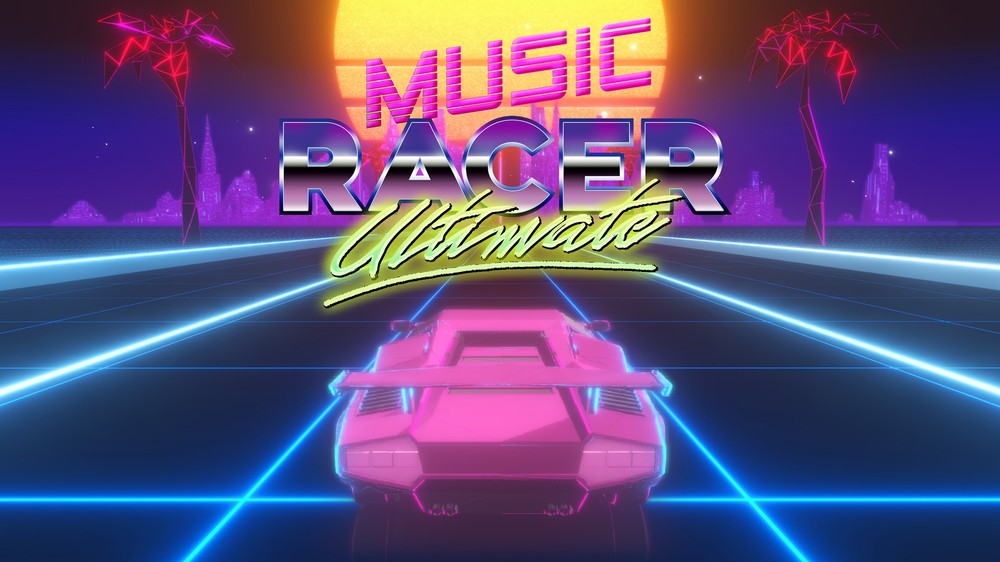What do you say about a racing rhythm game that is neither a racing nor a rhythm game? Music Racer: Ultimate falls short of these classifications and the application is more of a proof of concept rather than a commercial product. From the trophies, progression system, and game modes it’s apparent that this was a good idea that at one point had wheels, but the mechanics don’t coalesce into a finished product. While the asking price is only $6.99 on PlayStation and Xbox, I’d recommend you read the criticisms carefully before purchasing, or if you’re in love with electronic music and neon visualizers then read on.
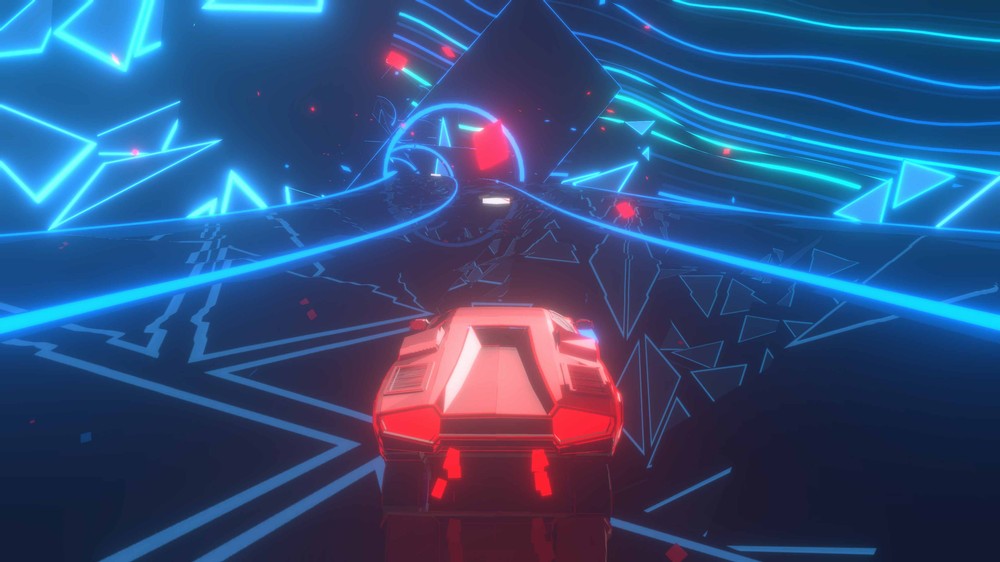 To begin with what worked, the artwork in this game oozes with the style of the 90’s neon arcade games of old. The bright lights, reminiscent cars, and retro style are fun and intriguing to the total package. Each of the 14 tracks is unique with different design elements and quirks. While I’ll get to the gameplay later, on its face, the game looks and sounds solid from a visual standpoint. However, I did have an issue where the HUD icons and menu options were slightly off my screen. Despite changing resolutions, aspect ratios, and switching TVs I was unable to resolve this issue. At the time of writing there has been no update to remedy the blemish. But it does leave a poor first impression when first loading into the game. Artwork and soundtrack aside, the gameplay is where Music Racer: Ultimate breaks down.
To begin with what worked, the artwork in this game oozes with the style of the 90’s neon arcade games of old. The bright lights, reminiscent cars, and retro style are fun and intriguing to the total package. Each of the 14 tracks is unique with different design elements and quirks. While I’ll get to the gameplay later, on its face, the game looks and sounds solid from a visual standpoint. However, I did have an issue where the HUD icons and menu options were slightly off my screen. Despite changing resolutions, aspect ratios, and switching TVs I was unable to resolve this issue. At the time of writing there has been no update to remedy the blemish. But it does leave a poor first impression when first loading into the game. Artwork and soundtrack aside, the gameplay is where Music Racer: Ultimate breaks down.
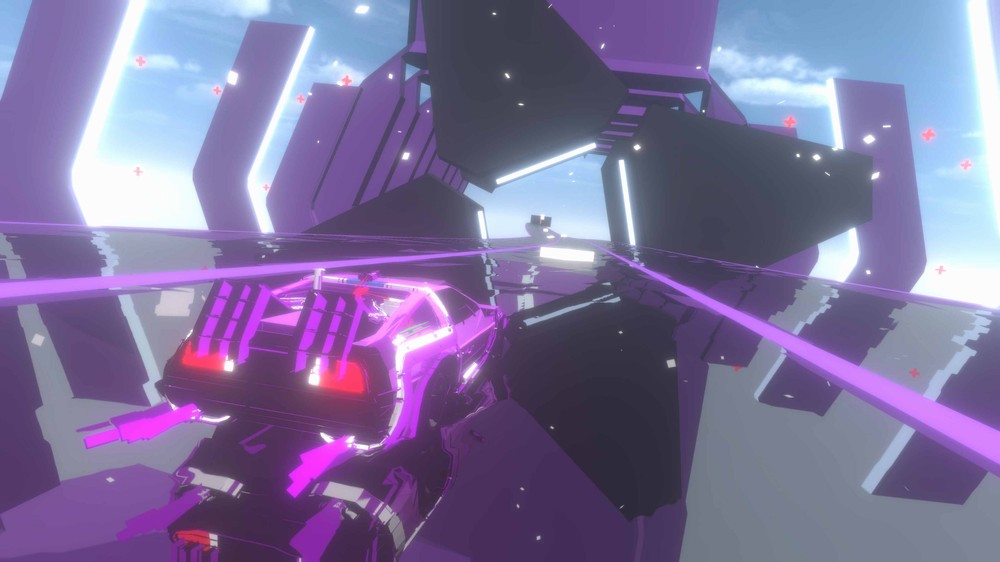 Let me outline the setup for each “race.” First choose a vehicle, a track, one of three repositories for music, a song, and finally one of four modes. The game has 25 cars, 14 levels, and when you chose a song the software will then generate the track, presumably based on the sound file of the song selected. The variations of difficulty are found within the four game modes. It’s important to note this order of events, as it is not curated like Guitar Hero, Rock Band, or Thumper. The difficulty modes are really variations of the same mode: Standard, Zen, Cinematic, and Hard. There is only one mode with a fail state, Hard; you could set your controller down for the other modes while the song played and still “finish” the level. If that is at all confusing, I was a bit confused too, as there is very little explanation as to what each of these modes are.
Let me outline the setup for each “race.” First choose a vehicle, a track, one of three repositories for music, a song, and finally one of four modes. The game has 25 cars, 14 levels, and when you chose a song the software will then generate the track, presumably based on the sound file of the song selected. The variations of difficulty are found within the four game modes. It’s important to note this order of events, as it is not curated like Guitar Hero, Rock Band, or Thumper. The difficulty modes are really variations of the same mode: Standard, Zen, Cinematic, and Hard. There is only one mode with a fail state, Hard; you could set your controller down for the other modes while the song played and still “finish” the level. If that is at all confusing, I was a bit confused too, as there is very little explanation as to what each of these modes are.
 I want to be specific about the mechanic of generating the notes your car is attempting to sync up with rather than designing the level to sync up with the song by hand. The goal of the game is to put you into a flow of synchronizing the movements of your vehicle with the beats of the song. The problem comes when you have a program generating these beats for you, rather than building the track and level by hand. In short, the vehicle movements never synchronized with the song. It felt like I was playing Guitar Hero but with extreme lag. I even found that I scored better when I took my headphones off and attempted to beat my high score without sound. I found I was much more effective relying only on the visual rather than trying to synchronize with the music.
I want to be specific about the mechanic of generating the notes your car is attempting to sync up with rather than designing the level to sync up with the song by hand. The goal of the game is to put you into a flow of synchronizing the movements of your vehicle with the beats of the song. The problem comes when you have a program generating these beats for you, rather than building the track and level by hand. In short, the vehicle movements never synchronized with the song. It felt like I was playing Guitar Hero but with extreme lag. I even found that I scored better when I took my headphones off and attempted to beat my high score without sound. I found I was much more effective relying only on the visual rather than trying to synchronize with the music.
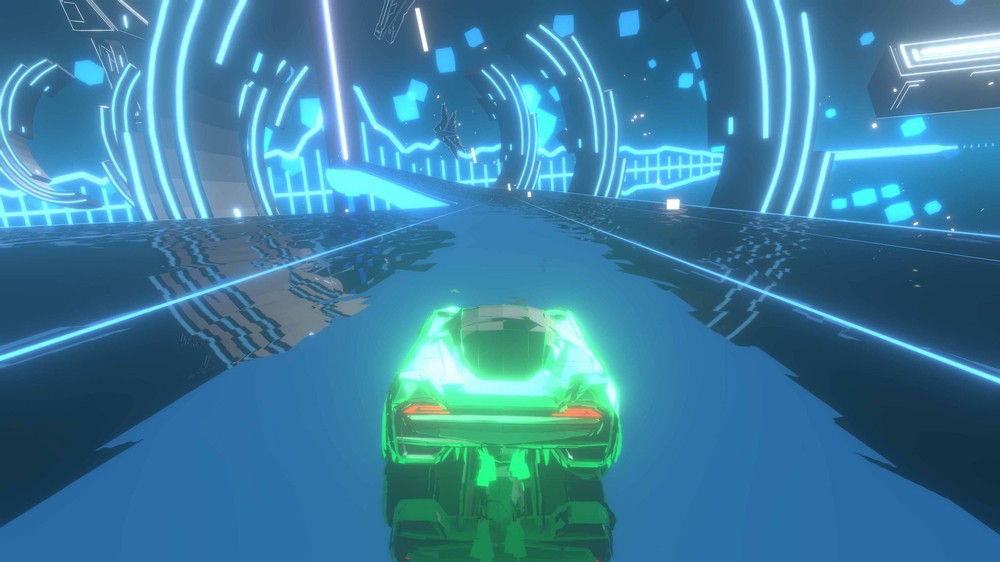 To make things more difficult, your car will speed up or slow down apart from your input. You are not in control of the acceleration of the vehicle. This is why I don’t think it appropriate to call Music Racer: Ultimate a racing game. Along those lines, some levels have hills and turns that you are unable to see around. You may have an obstacle whip around the corner and cause you to lose all of your currency while having done nothing “wrong” as the player.
To make things more difficult, your car will speed up or slow down apart from your input. You are not in control of the acceleration of the vehicle. This is why I don’t think it appropriate to call Music Racer: Ultimate a racing game. Along those lines, some levels have hills and turns that you are unable to see around. You may have an obstacle whip around the corner and cause you to lose all of your currency while having done nothing “wrong” as the player.
It may sound harsh, but this is a music visualizer, not a rhythm game, and certainly not a rhythm racer. Similar to Audioshield, you have the option to enter your own music through a WebDAV server. I was unable to get this to work, but there is a repository of other people’s hosted content. Also similar to Audioshield I predict this will be shut down the second copyrighted music uploaded. While it’s a neat feature, the music industry is notorious for making examples of these situations. I didn’t find any licensed music thus far, but I have to imagine that if the game’s player base grew large enough it could become an issue.
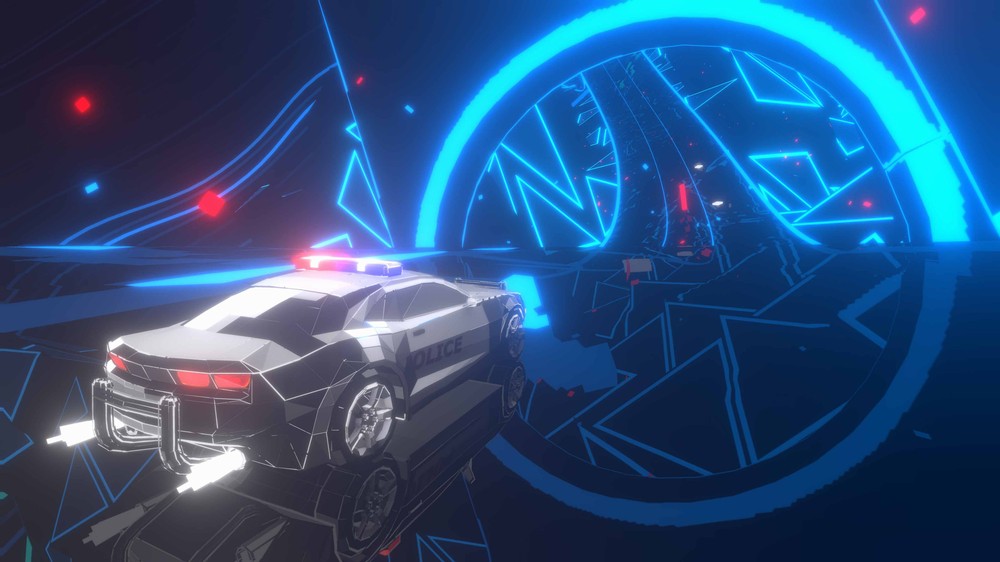 While there is still much more I could say about the game as a commercial package, I would advise the team simply use this as a proof of concept to shop around for more funding to tighten up the beats-generating software. That being said, I’m not a developer, so I’m certainly speaking out of turn. While the art design signed a check that the gameplay couldn’t cash, I hope someone gives us more rhythm games. Gone are the days of picking up my plastic guitar and feeling like I am playing Stairway to Heaven. While I cannot recommend this title, I would steer you to Thumper for your vehicular rhythm fix.
While there is still much more I could say about the game as a commercial package, I would advise the team simply use this as a proof of concept to shop around for more funding to tighten up the beats-generating software. That being said, I’m not a developer, so I’m certainly speaking out of turn. While the art design signed a check that the gameplay couldn’t cash, I hope someone gives us more rhythm games. Gone are the days of picking up my plastic guitar and feeling like I am playing Stairway to Heaven. While I cannot recommend this title, I would steer you to Thumper for your vehicular rhythm fix.

